Abstract
1. Contraction time (CT), ½ relaxation time (½ RT), maximum twitch-tetanus tensions and the activity of two glycolytic enzymes (aldolase, pyruvic kinase) and two oxidative enzymes (malic and isocitric dehydrogenase) was studied in anterior tibialis (AT) and soleus (SOL) muscles from birth to 18 weeks of age.
2. One hind leg of each of six kittens was casted at birth and the above parameters were examined in both casted and contralateral AT and SOL at 18 weeks of age.
3. Differentiation of the contraction properties in normal developing fast muscle (AT) was closely paralleled by a marked elevation in glycolytic enzyme activity. Oxidative enzymic activity in AT and SOL was relatively unchanged from birth to 18 weeks of age, as was glycolytic activity in SOL.
4. Disuse, due to immobilization, produced atrophy in AT and SOL muscles at 18 weeks of age. The CT of the casted SOL was slightly quicker than normal while the CT of the AT was unchanged. The glycolytic and oxidative enzymic activity in both casted muscles was generally unchanged but the contralateral AT had higher glycolytic activity than normal muscles.
Full text
PDF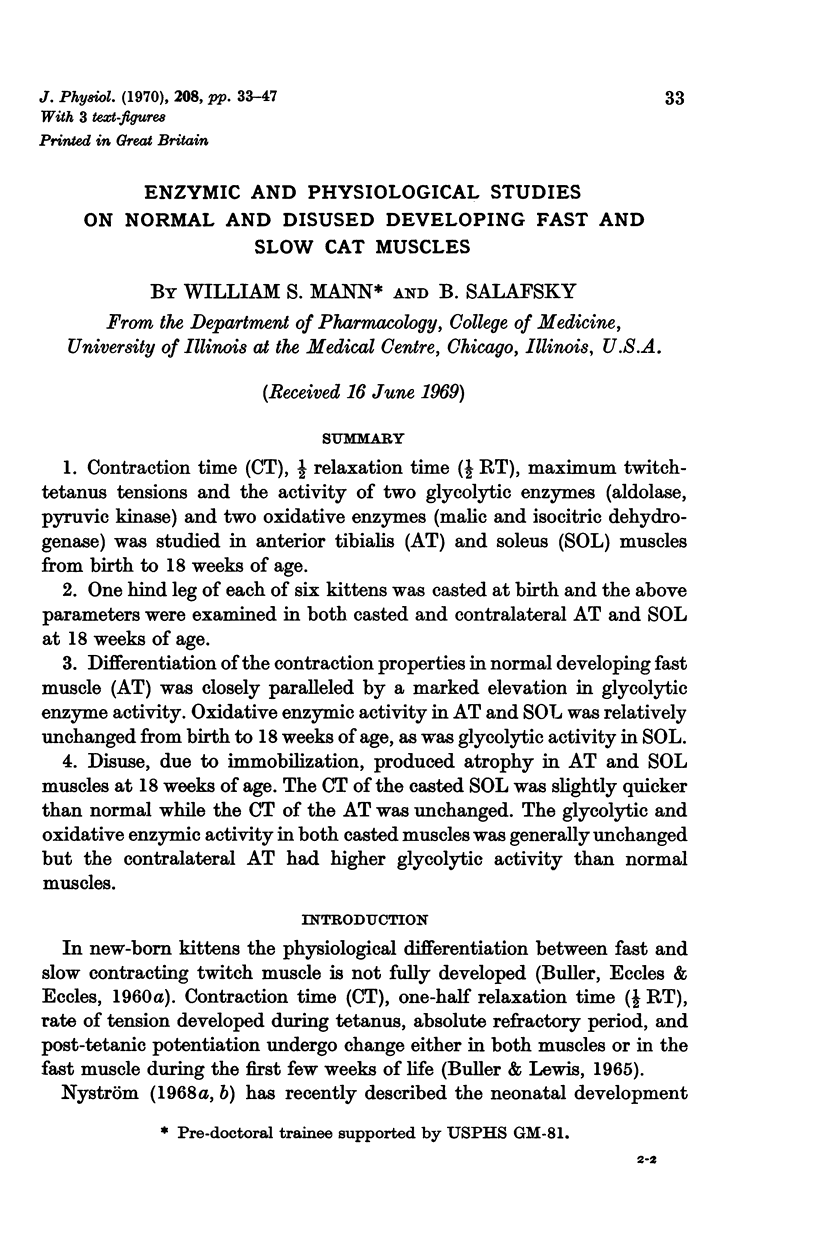
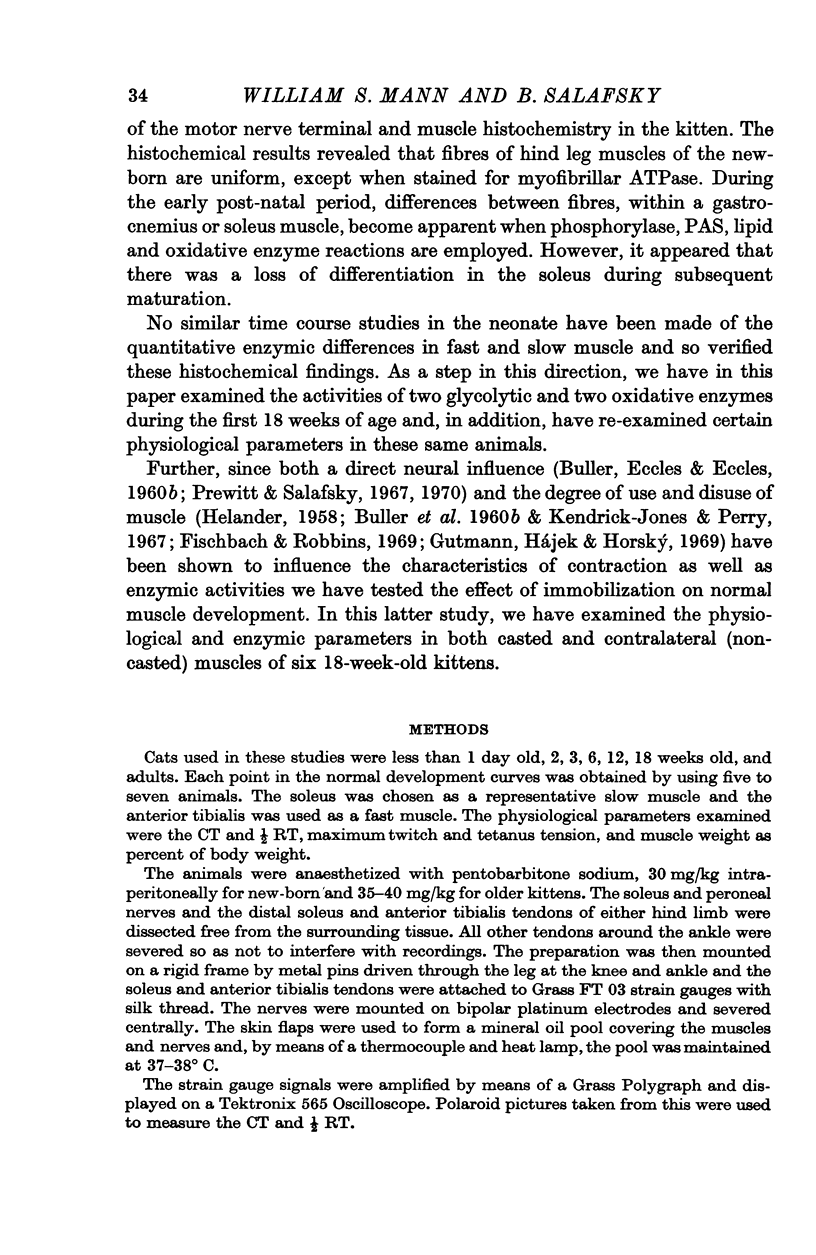
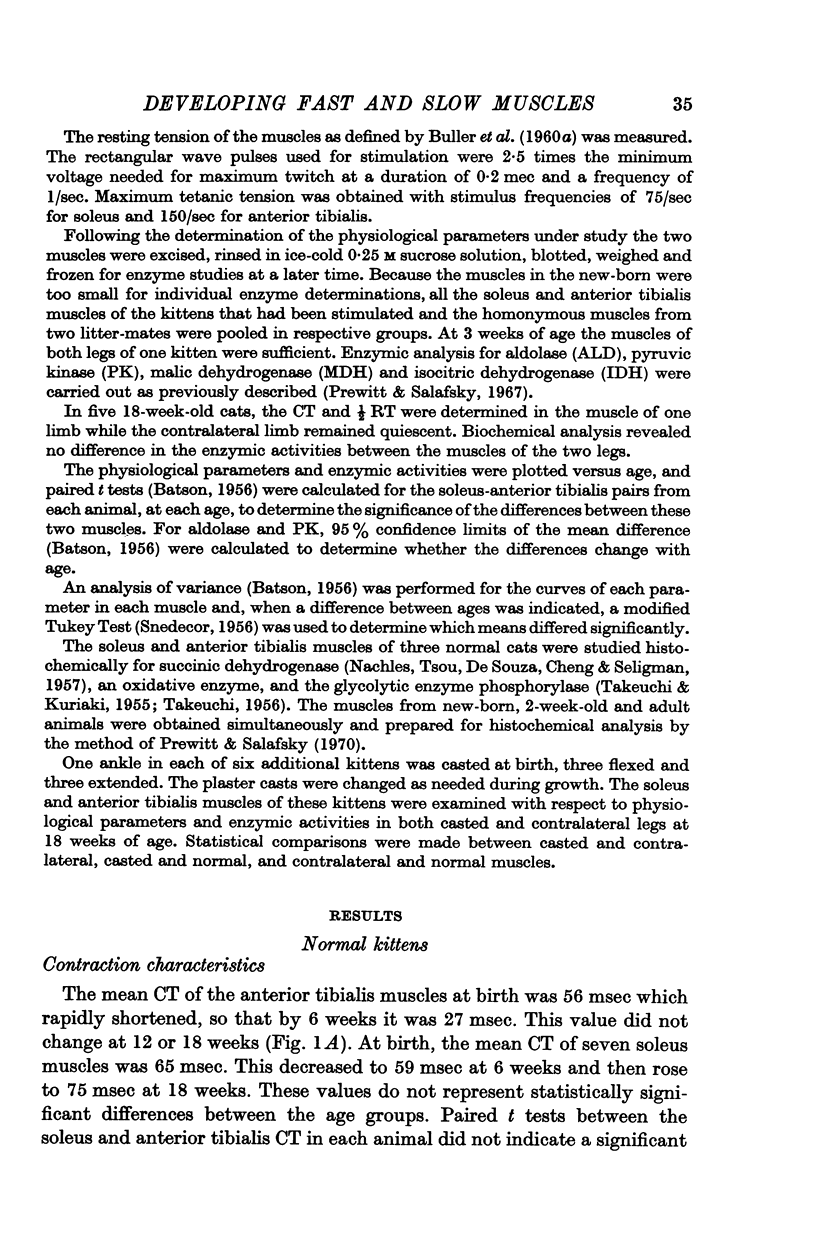
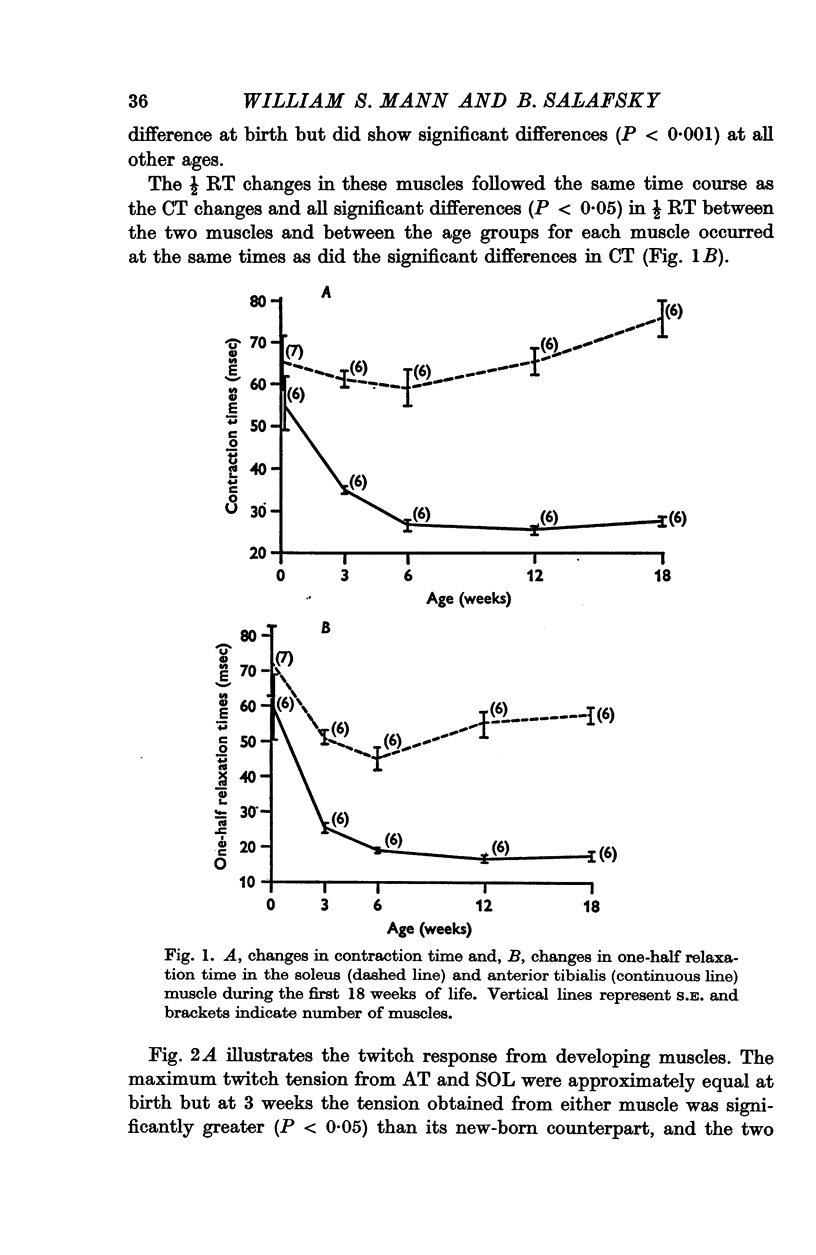
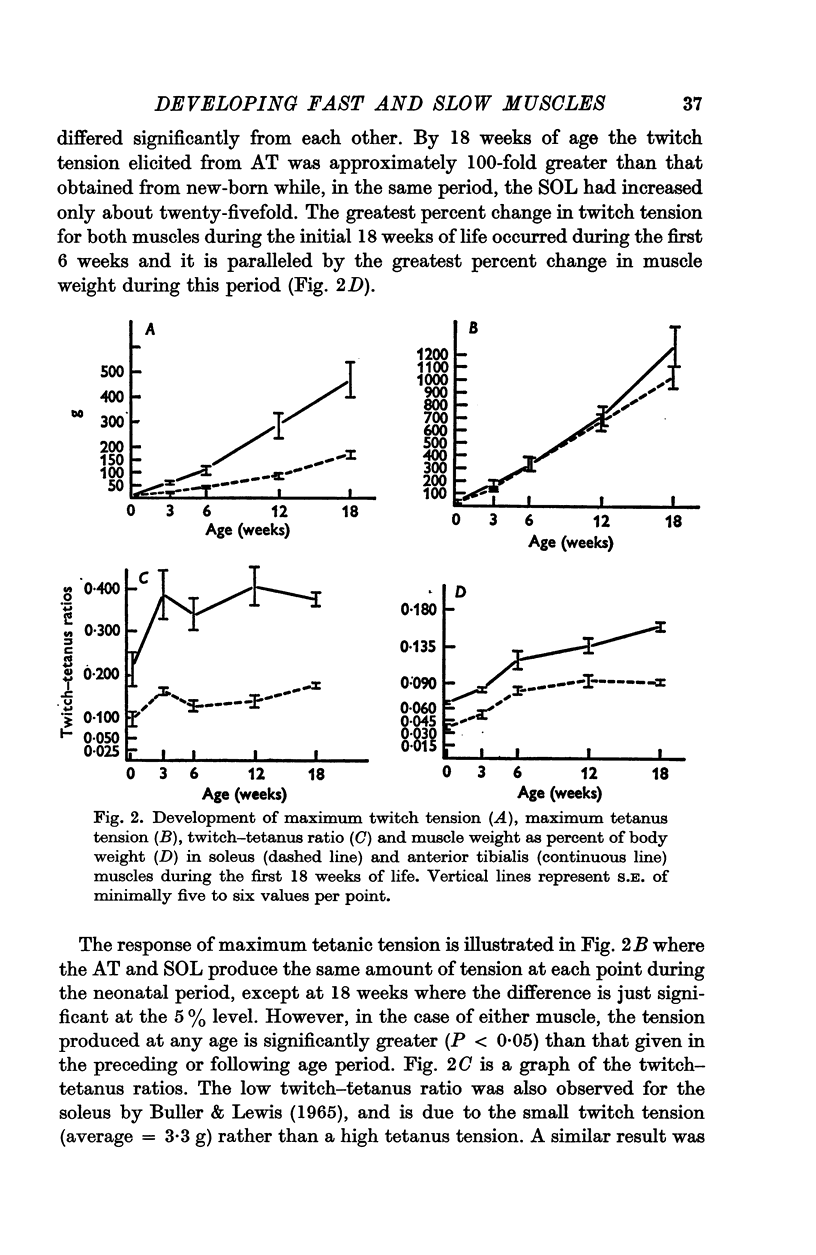
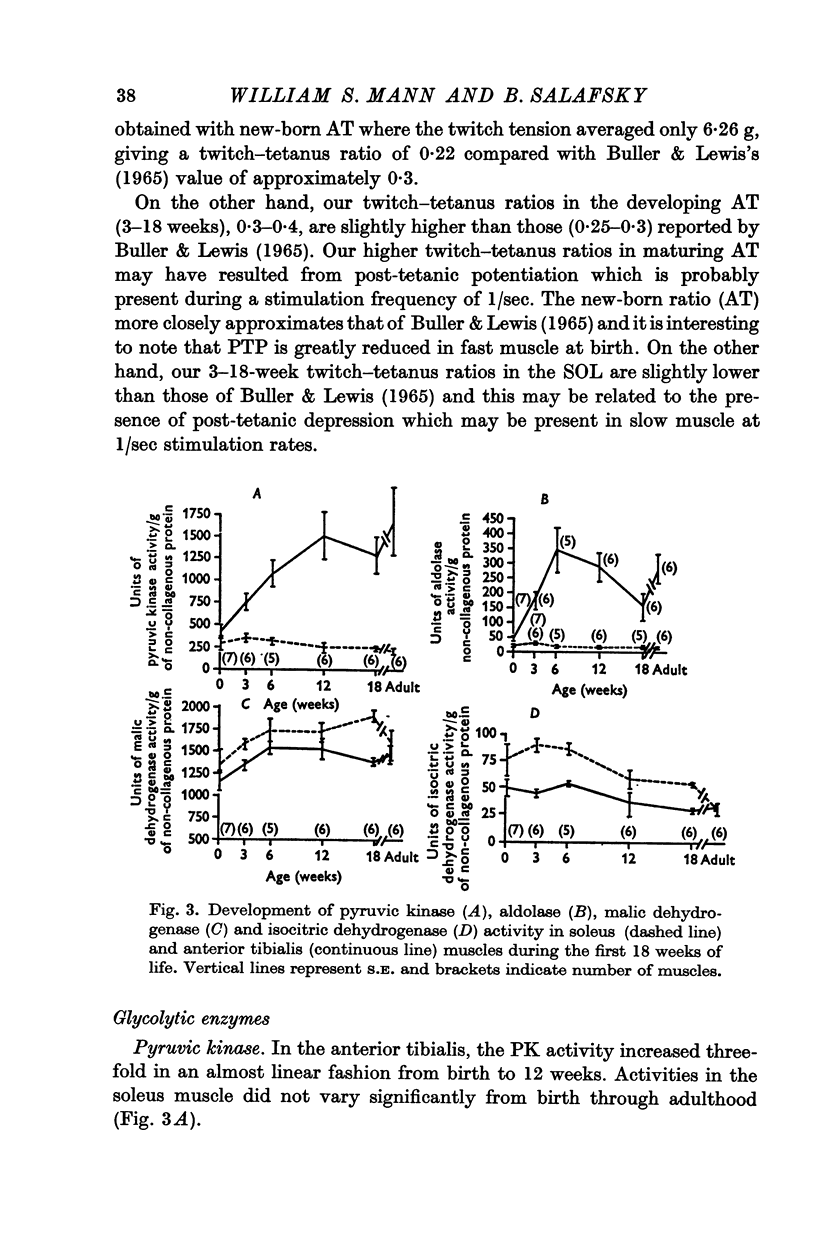

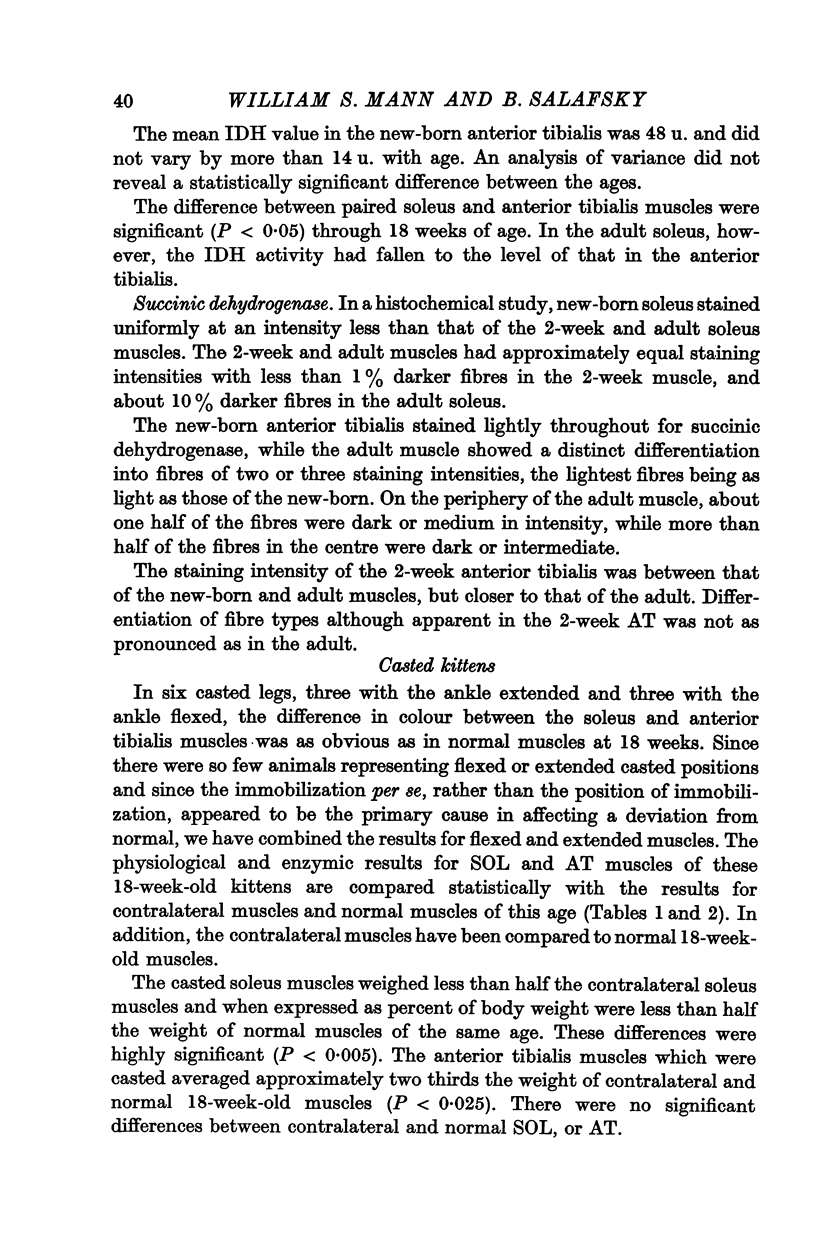
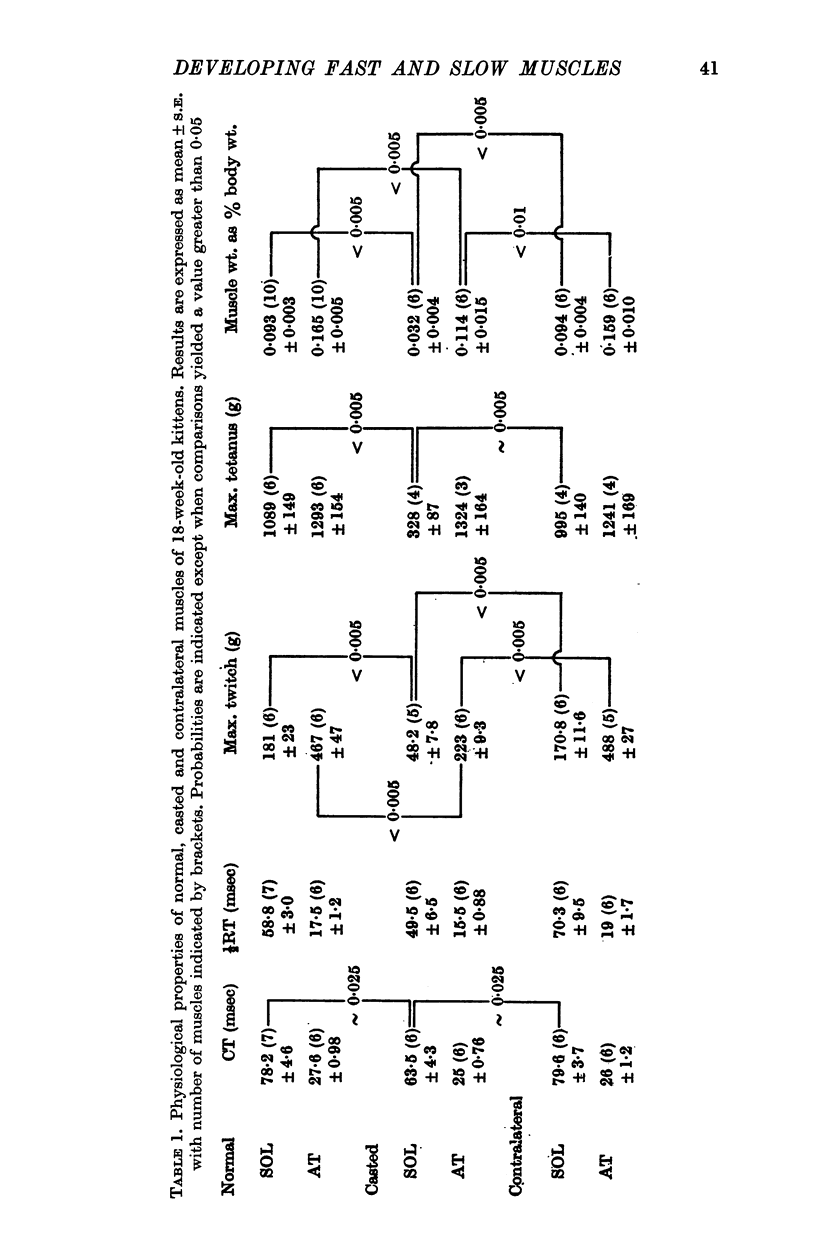
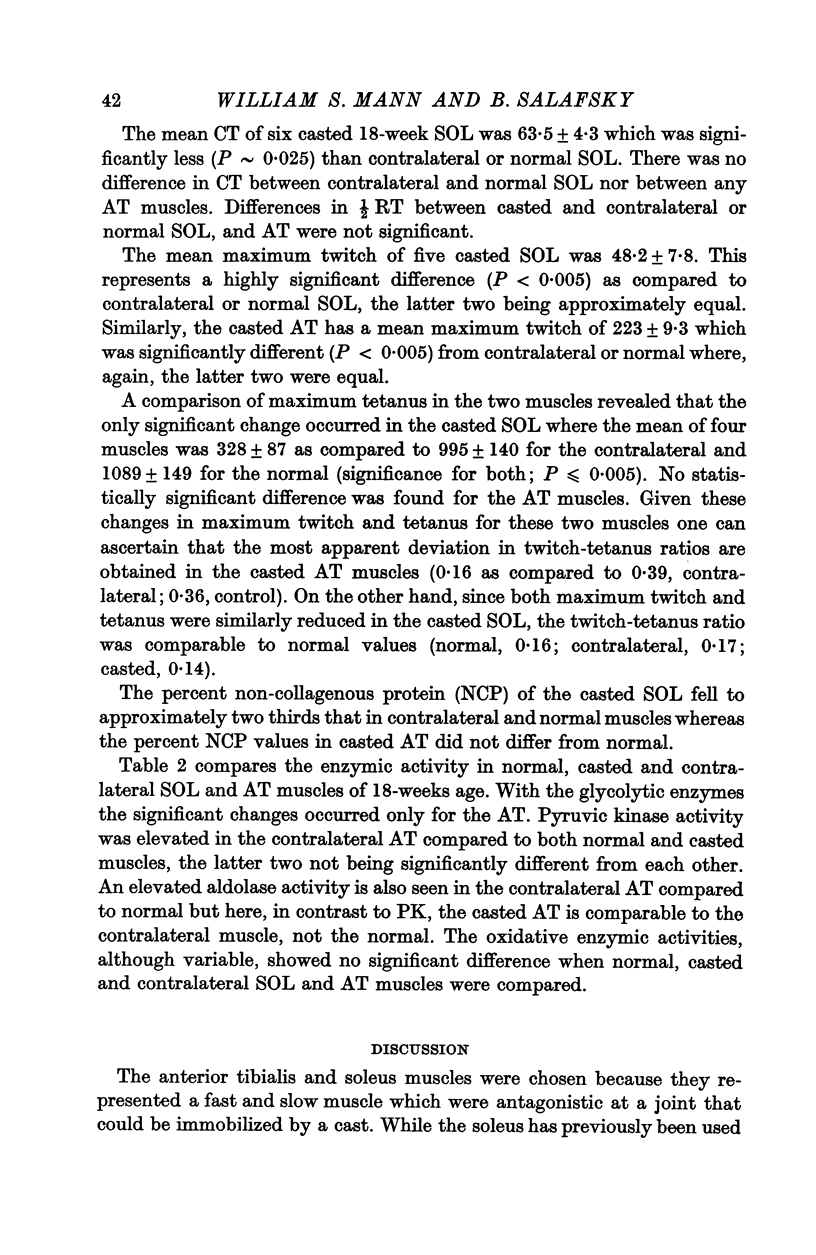
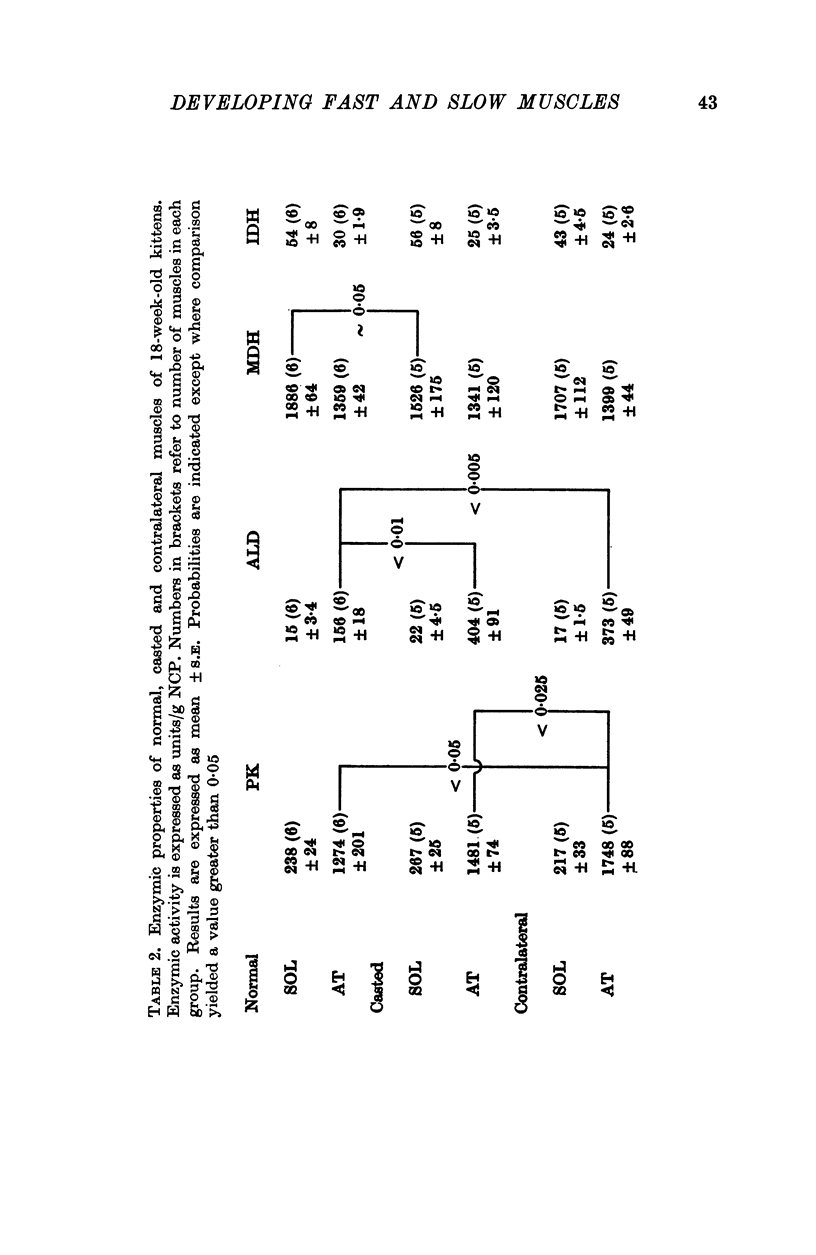
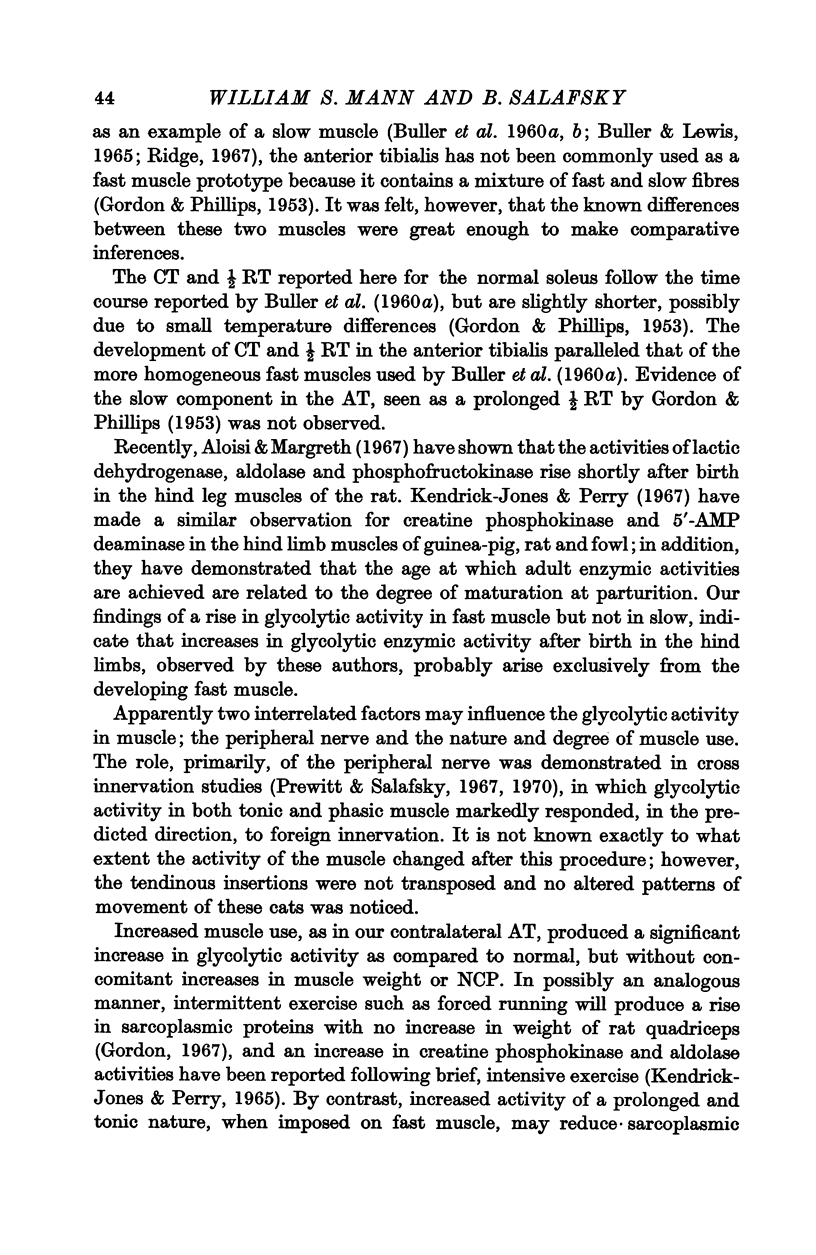

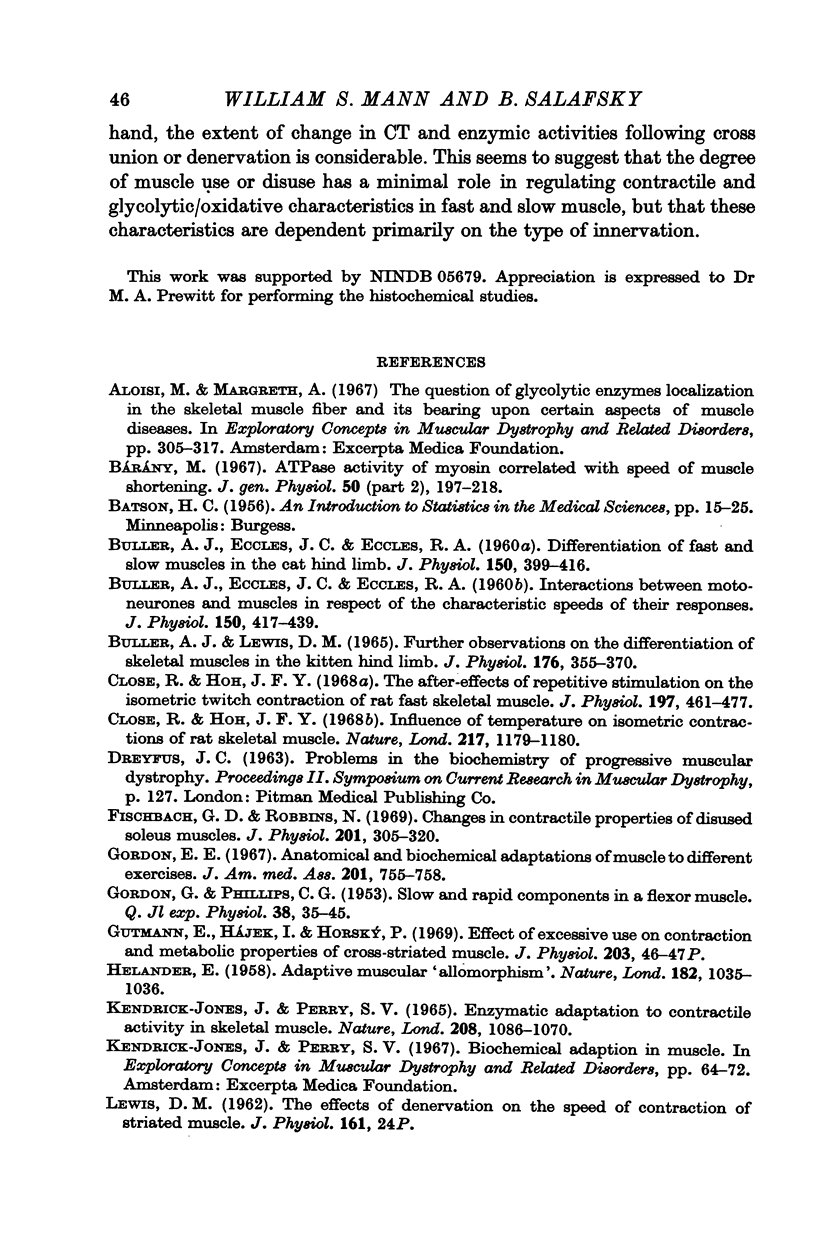
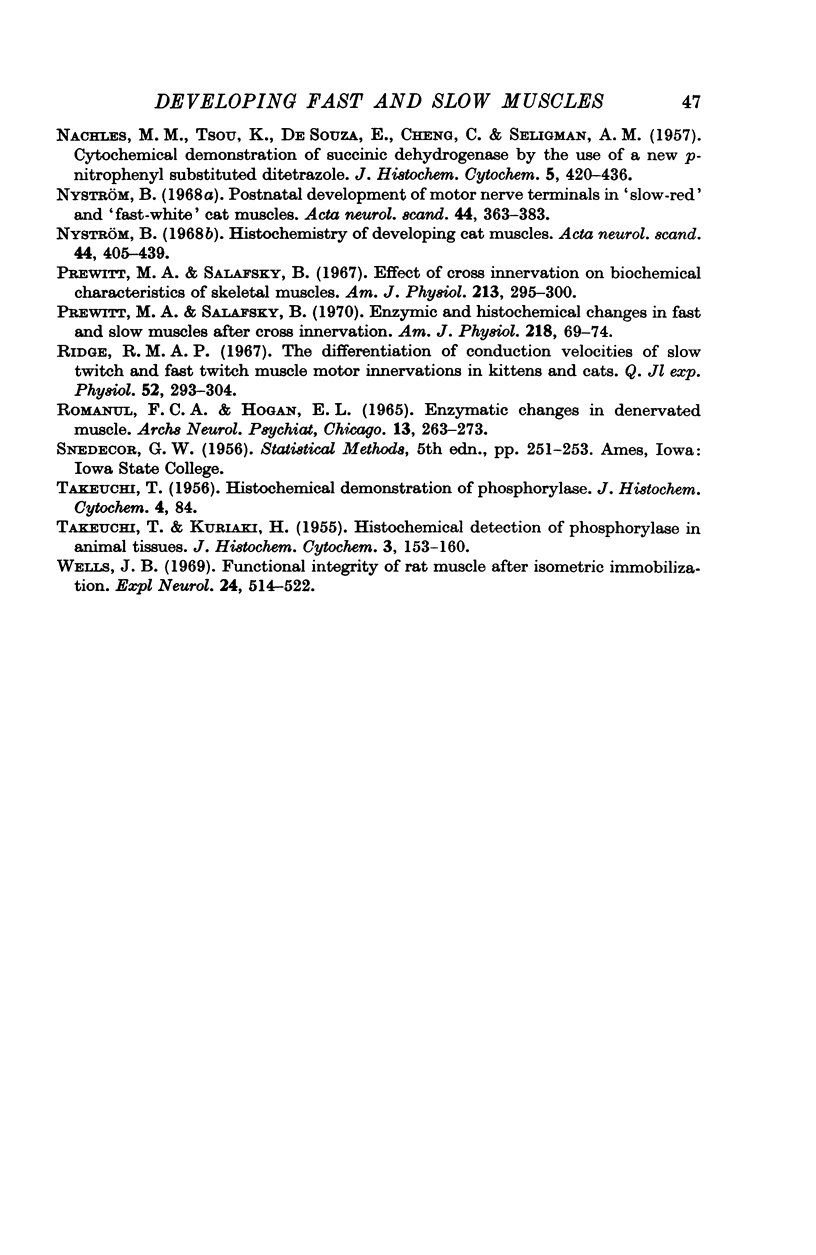
Selected References
These references are in PubMed. This may not be the complete list of references from this article.
- BULLER A. J., ECCLES J. C., ECCLES R. M. Differentiation of fast and slow muscles in the cat hind limb. J Physiol. 1960 Feb;150:399–416. doi: 10.1113/jphysiol.1960.sp006394. [DOI] [PMC free article] [PubMed] [Google Scholar]
- BULLER A. J., ECCLES J. C., ECCLES R. M. Interactions between motoneurones and muscles in respect of the characteristic speeds of their responses. J Physiol. 1960 Feb;150:417–439. doi: 10.1113/jphysiol.1960.sp006395. [DOI] [PMC free article] [PubMed] [Google Scholar]
- BULLER A. J., LEWIS D. M. FURTHER OBSERVATIONS ON THE DIFFERENTIATION OF SKELETAL MUSCLES IN THE KITTEN HIND LIMB. J Physiol. 1965 Feb;176:355–370. doi: 10.1113/jphysiol.1965.sp007555. [DOI] [PMC free article] [PubMed] [Google Scholar]
- Close R., Hoh J. F. Influence of temperature on isometric contractions of rat skeletal muscles. Nature. 1968 Mar 23;217(5134):1179–1180. doi: 10.1038/2171179a0. [DOI] [PubMed] [Google Scholar]
- Close R., Hoh J. F. The after-effects of repetitive stimulation on the isometric twitch contraction of rat fast skeletal muscle. J Physiol. 1968 Jul;197(2):461–477. doi: 10.1113/jphysiol.1968.sp008570. [DOI] [PMC free article] [PubMed] [Google Scholar]
- Fischbach G. D., Robbins N. Changes in contractile properties of disused soleus muscles. J Physiol. 1969 Apr;201(2):305–320. doi: 10.1113/jphysiol.1969.sp008757. [DOI] [PMC free article] [PubMed] [Google Scholar]
- GORDON G., PHILLIPS C. G. Slow and rapid components in a flexor muscle. Q J Exp Physiol Cogn Med Sci. 1953;38(1):35–45. doi: 10.1113/expphysiol.1953.sp001005. [DOI] [PubMed] [Google Scholar]
- Gordon E. E. Anatomical and biochemical adaptations of muscle to different exercises. JAMA. 1967 Sep 4;201(10):755–758. [PubMed] [Google Scholar]
- Gutmann E., Hájek I., Horský P. Effect of excessive use on contraction and metabolic properties of cross-striated muscle. J Physiol. 1969 Jul;203(1):46P–47P. [PubMed] [Google Scholar]
- HELANDER E. Adaptive muscular allomorphism. Nature. 1958 Oct 11;182(4641):1035–1036. doi: 10.1038/1821035a0. [DOI] [PubMed] [Google Scholar]
- Kendrick-Jones J., Perry S. V. Enzymatic adaptation to contractile activity in skeletal muscle. Nature. 1965 Dec 11;208(5015):1068–1070. doi: 10.1038/2081068a0. [DOI] [PubMed] [Google Scholar]
- NACHLAS M. M., TSOU K. C., DE SOUZA E., CHENG C. S., SELIGMAN A. M. Cytochemical demonstration of succinic dehydrogenase by the use of a new p-nitrophenyl substituted ditetrazole. J Histochem Cytochem. 1957 Jul;5(4):420–436. doi: 10.1177/5.4.420. [DOI] [PubMed] [Google Scholar]
- Nyström B. Postnatal development of motor nerve terminals in "slow-red" and "fast-white" cat muscles. Acta Neurol Scand. 1968;44(3):363–383. doi: 10.1111/j.1600-0404.1968.tb05578.x. [DOI] [PubMed] [Google Scholar]
- Prewitt M. A., Salafsky B. Effect of cross innervation on biochemical characteristics of skeletal muscles. Am J Physiol. 1967 Jul;213(1):295–300. doi: 10.1152/ajplegacy.1967.213.1.295. [DOI] [PubMed] [Google Scholar]
- Prewitt M. A., Salafsky B. Enzymic and histochemical changes in fast and slow muscles after cross innervation. Am J Physiol. 1970 Jan;218(1):69–74. doi: 10.1152/ajplegacy.1970.218.1.69. [DOI] [PubMed] [Google Scholar]
- Ridge R. M. The differentiation of conduction velocities of slow twitch and fast twitch muscle motor innervations in kittens and cats. Q J Exp Physiol Cogn Med Sci. 1967 Jul;52(3):293–304. doi: 10.1113/expphysiol.1967.sp001915. [DOI] [PubMed] [Google Scholar]
- Romanul F. C., Hogan E. L. Enzymatic changes in denervated muscle. I. Histochemical studies. Arch Neurol. 1965 Sep;13(3):263–273. doi: 10.1001/archneur.1965.00470030043003. [DOI] [PubMed] [Google Scholar]
- Wells J. B. Functional integrity of rat muscle after isometric immobilization. Exp Neurol. 1969 Aug;24(4):514–522. doi: 10.1016/0014-4886(69)90154-x. [DOI] [PubMed] [Google Scholar]


